Will I know when I'm dead?

The nature of your post-mortem transition is largely determined by your state of mind at the time, the overall contents of your psyche (your “set,” in psychological terms), and the nature of your death (natural, violent, etc.).
Hence, experiences vary widely.
Natural VS Sudden Deaths
Dr Robert Crookall (1970) in his thorough research of NDEs and OBEs noticed a pattern regarding the nature of the transition. People who left their bodies in a “natural” manner tended to enjoy clear and enhanced consciousness, while that of the forcibly ejected was “remarkably restricted, dim, and even sub-normal—that is, with dreamlike elements.”
The “naturals” tended to glimpse bright and peaceful (“Paradise”) conditions, a kind of glorious earth; while the forcibly ejected, if not on earth, tended to be in the relatively dim, confused, and semi-dreamlike conditions that correspond to the “Hades” of the ancients. The former group met many helpers (including the “dead” friends and relatives already mentioned); the latter sometimes encountered discarnate would-be hinderers.1
Crookall acknowledged the observable data was explainable through the hypothesis of a semi-physical body of vitality (etheric body) and a superphysical “Soul Body” (a.k.a. astral body).
A third major pattern Crookall identified was that mediumistic people commonly made an observation non-mediumistic folk did not while having OBEs: It was that something that resembled “mist,” “fog,” “smoke,” “vapor,” or “cloud” left their bodies and formed part of the liberated “double.”
The “mist” was identified as substance from the etheric body, a.k.a. vehicle of vitality (which corresponds to the ectoplasm of psychical research covered in Chapter 1).2
A Difficult Death, As Told from the Astral Planes
Let’s look at a difficult transition to the afterlife, as told by Scott (a pseudonym), one of Jane Sherwood’s channelled “astral muses.” I stress, this is not a typical transitional experience into the afterlife (as far as my research indicates), but it is instructive—and it illustrates Crookall’s assertions beautifully.
Scott:
Out of the sleep of death there comes first a mere sense of identity, a point of self-awareness growing out of nothingness. From this I judge that the higher activity of the ego-being is the first to assert itself. One wakes next to a tumult of emotions and a hurried, anxious thought.
Somewhere in this part of the experience comes the unrolling of memories…it is like a speeded up run-through of a film shown backwards, a swiftly moving vision of life from end to beginning [exactly as Steiner and others have described], flickering rapidly past the mind’s eye until it ends in the unconsciousness of one’s beginning. More unconsciousness follows and in my case, the rest was a phantasmagoria.
Glimpses of a world seen, clutched at and blotted out, dreamlike awareness of people and events on earth at which one grasped because of their dear familiarity only to realise that one could not make one’s presence known. In the effort to do so the scene would melt and change into another. Then the final fading of earth and a long sojourn in what I think of as Hades…a dim and formless world which I believe is peopled by the miasma of earth emotions and unconscious projections of its inhabitants. [This reads like a very dimly experienced astral sub-plane; also reads like a description of Monroe’s M-band noise.]
Finally comes the stabilisation of the new body and a growing awareness of a real world again; light, clear outlines and real people moving about in a glorious world…I think I really had the maximum difficulties: an attitude of blank unbelief in any future life, a repressed and powerful emotional state, and the shock of a violent death. So this was not the normal passing but just a difficult and painful personal experience. I am satisfied that it was a just necessity and that I had made it inevitable by my wilful ignorance and scepticism. “Whatsoever a man sows” you know.3 [Emphasis added]
This soul speculated that in the case of sudden deaths such as his own, the energy bodies cannot at first free themselves from the physical rate of vibration they had been “timed down” to and fallen into phase with. It appears that in Scott’s case, he was still entangled with his etheric body (due to the unnatural sudden death), thus the confusing and hectic muddle of thoughts, feelings and perceptions. Thankfully this is not the kind of transition most of us can expect. Closed-minded scepticism is definitely not your ally in the long run.
Post Script
In an interesting twist, “Scott” turned out to be the soul of British Intelligence Officer Thomas Edward Lawrence (1888 - 1935), who inspired the famous Lawrence of Arabia character (played by Peter O’Toole). In World War I Lawrence was sent by the British to aid and train Arab rebels who were fighting against the Ottoman Empire. He became renowned for his role in the Arab Revolt (1916–1918) and the Sinai and Palestine Campaign (1915–1918) against the Ottoman Empire.
Sadly, he died of head trauma in hospital following a motorcycle accident (hence his comment about “the shock of a violent death”) near his home, aged 46,4 after which he began communicating with the medium Jane Sherwood (initially withholding his identity for reasons you can probably imagine).

The “phantasmagoria” and dream-like awareness he describes appears to be attributable to the fact that the low-energy particles in the etheric/vital body are no longer confined within the space of the now-dead physical body, and so will disperse throughout the ovoid’s plasma field, many of them being thrust by the layers of the aura to the outermost part of the etheric shell. This then has the effect of blocking communication with the part of the physical-etheric plane coincident with earth’s surface, effecting a loss of vision or consciousness for a time.
This reorganisation and eventual shedding of the etheric body takes a variable amount of time, even up to a week, during which time such a soul—perhaps in a more congenial situation than Scott’s/Lawrence’s—may visit friends and relatives, usually with the aide of a personal guide.5
![r/HistoryPorn - The real Lawrence of Arabia (Thomas Edward Lawrence) - 1918 [691*900] colorized r/HistoryPorn - The real Lawrence of Arabia (Thomas Edward Lawrence) - 1918 [691*900] colorized](https://substackcdn.com/image/fetch/w_1456,c_limit,f_auto,q_auto:good,fl_progressive:steep/https%3A%2F%2Fsubstack-post-media.s3.amazonaws.com%2Fpublic%2Fimages%2F42ebdc4b-e758-49b8-b563-5dff730611e9_640x833.jpeg)
Researcher Jay Alfred contends that after the etheric-triggered loss of vision or blackout begins, most souls will rise automatically or be escorted by a guide into the lowest heavenly plasmasphere, about twenty kilometres above sea level. If, however, the etheric plasma body is very dense and heavy, it will sink into a hell realm, as a natural consequence of its specific gravity. This ecological dark plasma niche is coincident with the uppermost layer of the hyper-viscous mantle, just below the earth’s surface or crust, which is where Alfred finds that most religions locate their various hells. There, the blackout/loss of vision will naturally reach its conclusion as vision and awareness is restored—though this individual is not likely to like what they see. Alfred equates the dense, low-energy dark plasma of such a soul to “heavy karma.”6

A Good Death
Sherwood’s “guide” identified himself as E.K., and he spoke authoritatively on the “natural” transition process brought on by old age, stating that in such a case—in stark contrast to a situation like “Scott’s”—one “wakes quietly in the new conditions after an interval of a few days.” He outlined the two major stages as he saw them:
Actual death is followed by a period of unconsciousness which lasts for some time [Anglican bishop and seer C.W. Leadbeater stated in The Inner Life that generally one is unconscious until he/she has shed the etheric, which takes a variable amount of time]; this gives way to a kind of awareness but not a consciousness of one’s environment. The new senses have not yet begun to function so there is nothing, or at best a misty, unreal setting, fantastic and dreamlike. During this interval the memory appears to be stimulated so that one lives through a resume of the lifetime just past. Then one sinks into a second period of unconsciousness which should give place to a full awakening in the new world.7
This more or less confirms what “Scott” stated above. The “second death” which must occur before properly awakening into awareness of the astral planes, is the discarding of the etheric body—a process normally taking three days, and which E.K. points out, is what Scott describes above. Three days is, of course, the time it took Rome’s “Jesus Christ” to “rise again,” based on the much older Egyptian myth and eschatology (more on that later). The three days is code for the solstice sun (the sun of God, i.e., the sun-God Ra) reaching its still point and “dying” (being stationary) for three days before “rising again” and, resurrected, moving northwards on its everlasting journey through the heavens.8
The scarab of Egypt, which was regarded as self-created and self-resurrecting became associated with “Jesus,” who was referred to by several church fathers as “The Good Scarabaeus.9”
Dr Crookall’s research into descriptions of this process ascertained through mediumship captured this pattern regarding the three days and the so-called second death (“judgement”). For souls who had transitioned through “natural causes” (old age) and awoken to a paradisiacal realm, a second, more protracted, review of the past life was experienced, one which, unlike the first, was highly emotional and empathic: The newly dead man felt both the joy and the pain that his earth-life words and acts had caused in others, and this experience evidently corresponds to the individual Judgment. Each Soul then gravitated to his appropriate place in the immediate hereafter.10
Those people who died of old age tended to be tired and to sleep through the initial transition into the afterlife before awakening to pleasant (astral/mental) scenes, while those killed in the prime of life tended to remain partially awake and active though in a somewhat dreamlike “foggy,” “misty,” or “watery” Hades-like state, often not realising what had happened. They had to perceive the information field through the muddying lens of their still-vital etheric body (also known as pranic or vitality body).
This latter group had to wait until the vitality/etheric body was finally ready to be discarded (second death) before they could undergo the next, more emotional, life review/“Judgement” and then enter “Paradise” like the others.
Final Note: In the esoteric literature the so-called “second death” is generally and “officially” considered to be when the astral body is discarded so the soul can move into the heaven realms proper (a.k.a. Devachan). However, Crookall’s insightful work suggests we might consider the shedding of the etheric body to be the second death (the first being the physical body stopping working), as it marks a significant stage in the progress of consciousness deeper into the information field, before it can function lucidly in the “astral” densities—this being particularly true for those who die suddenly/before their time.
One reason for the under-emphasis on the etheric death in the esoteric literature may simply be that this vehicle of vitality is not considered a vehicle of consciousness proper (it is not mobile, for instance, but always attached to the physical); since it is considered part of the physical system and not an independently operating sheath of consciousness, its death is technically part of the physical death process. However, its modifying effects on post-mortem consciousness have largely gone underreported in the esoterica, and again, this is apparently partly due to the fact that many people (those who die naturally) sleep through the separation from the etheric body.
(This article is an excerpt from Book 2 of The Grand Illusion - working title: Secrets of Death and the Afterlife)
Thanks for reading. The audio version 🎧 will be accessible for my highly valued paying members (including Truthiversity members) 🙏
🚨 Want to know when “The Grand Illusion - Book 2” is ready? 📗
To get on the wait list and be notified when this groundbreaking and monumental work on the afterlife and nature of reality is available, click HERE
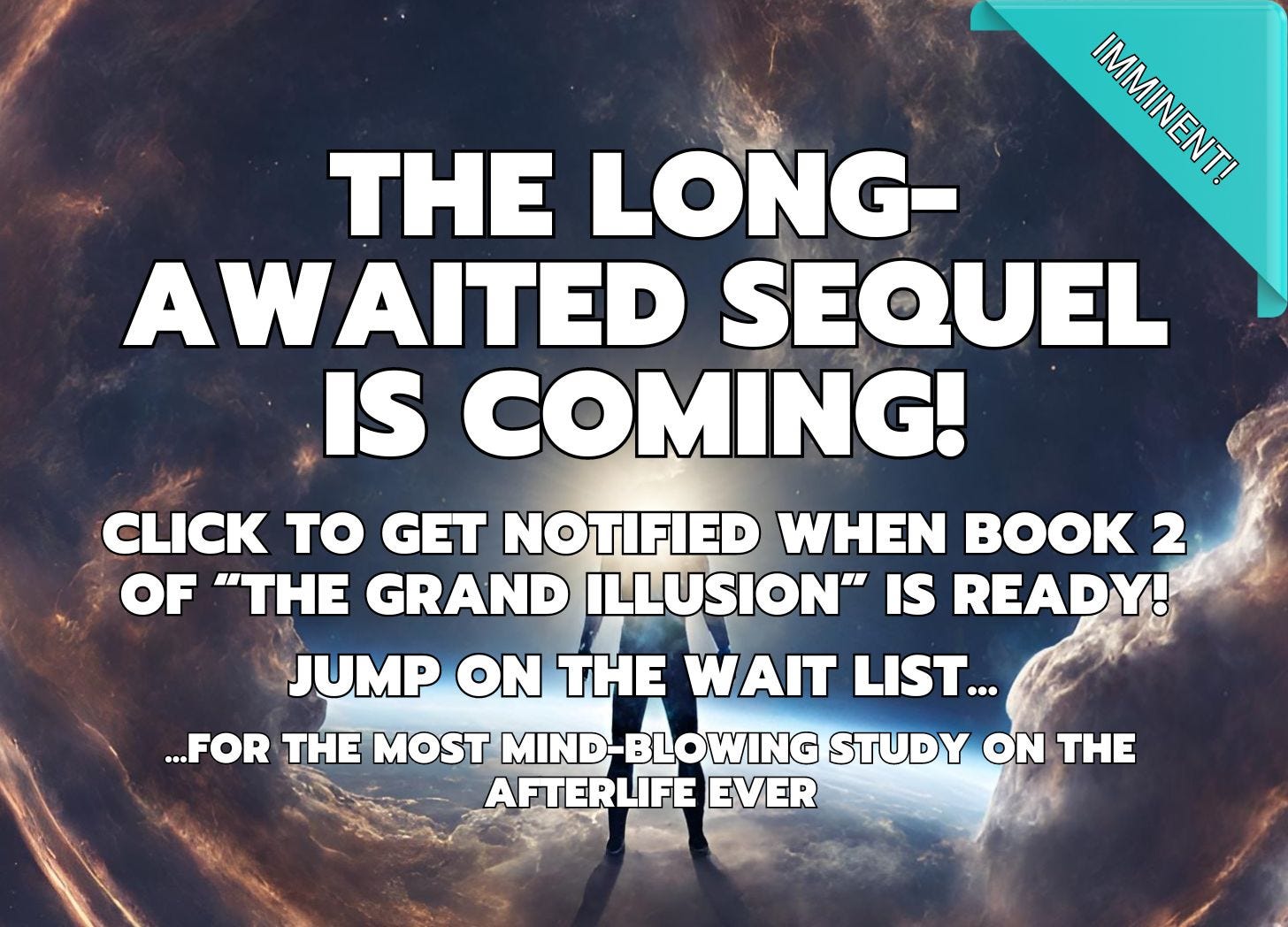
👀 NEW TIMES AVAILABLE FOR HTEY MASTERCLASS
Change your life from the inside out - FAST and with convenience.
Watch the upcoming LIVE and FREE "How to Evolve Yourself (Without Hard Work or Meditation)" Masterclass - huge discount inside ⤵️
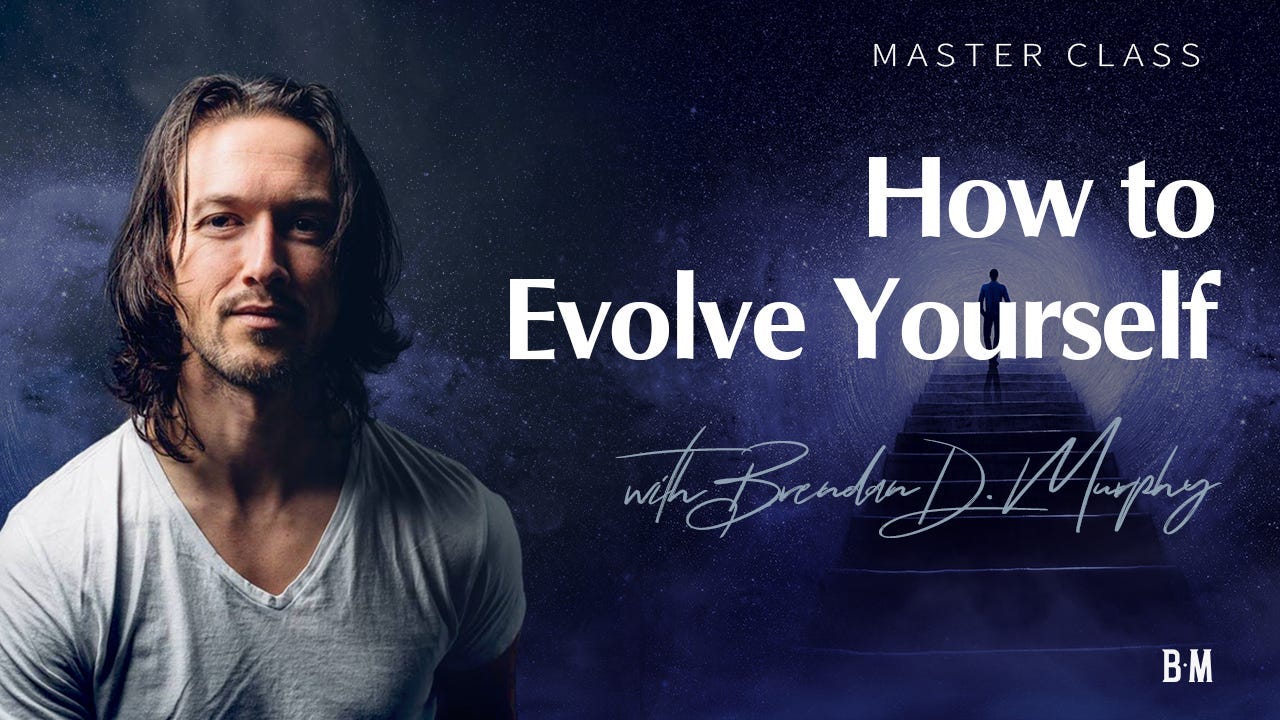
-
Upgrade your biofield and energetic circuitry
-
Conquer self-sabotage
-
Heal trauma
-
Expand self-awareness
-
Save time and money
-
Attract and manifest with less effort
-
Walk your true path ⤵️

Grab a copy of Book 1 by clicking the pic below (my site has the lowest prices) ⤵️
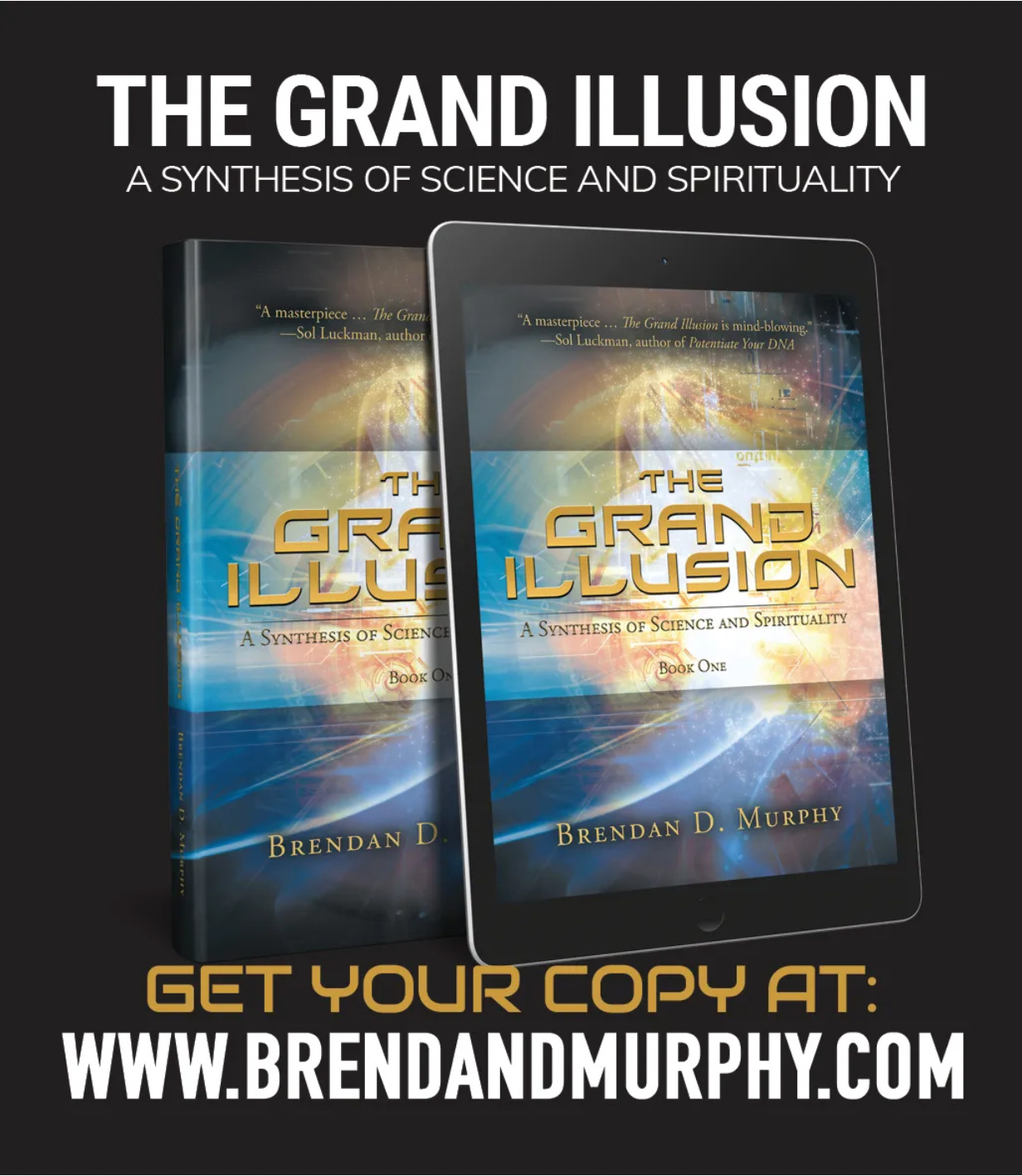
Some Reader Feedback
“Brendan is the Chomsky of the Spiritual movement.”
– Alobar Jones, medical intuitive
“Every person in the field of ‘paranormal’ psychology or related topics should have this book as a major reference.”
– Dr. Buryl Payne
“A masterpiece…The Grand Illusion is mind-blowing.”
– Sol Luckman, author of Potentiate Your DNA.
“You’ve written the best synthesis of modern science and esoteric science that I’ve seen in 40 years…Brilliant!”
– Michael K. Wade
🚨 For the audio + full access to ALL of my premium multimedia content (with podcast Q&As), become a member of The Truthiversity ⤵️


ENDNOTES
1 Crookall, Out of the Body Experiences, 14-15.
2 Ibid., 15-16.
3 Sherwood, The Country Beyond, 58-9.
4 https://www.iwm.org.uk/
5 Alfred, Between the Moon and Earth, chapter 14.
6 Ibid.
7 Sherwood, 61.
8 Tsarion, Astrotheology and Sidereal Mythology,
9 Vayro, Tears in Heaven, 203.
10 Crookall, 26-27.
¿Sabré cuándo estoy muerto?
La naturaleza de su transición está determinada en gran medida por su estado mental en ese momento, el contenido general de su psique (su "escenario", en términos psicológicos) y la naturaleza de su muerte (natural, violenta, etc.). Por lo tanto, las experiencias varían ampliamente.
Muertes naturales versus muertes súbitas
El Dr. Crookall (1970) en su exhaustiva investigación sobre las ECM notó un patrón en cuanto a la naturaleza de la transición. Las personas que abandonaban sus cuerpos de manera “natural” tendían a disfrutar de una conciencia clara y mejorada, mientras que la de los expulsados por la fuerza era “notablemente restringida, oscura e incluso subnormal, es decir, con elementos oníricos”. Los “naturales” tendían a vislumbrar condiciones luminosas y pacíficas (“Paraíso”), una especie de tierra gloriosa; mientras que los expulsados por la fuerza, si no estaban en la Tierra, tendían a encontrarse en condiciones relativamente oscuras, confusas y semi-oníricas que corresponden al “Hades” de los antiguos. El primer grupo encontró muchos ayudantes (incluidos los amigos y familiares “muertos” ya mencionados); estos últimos a veces encontraron posibles obstáculos desencarnados.1
Crookall reconoció que los datos observables se podían explicar mediante la hipótesis de un cuerpo semifísico de vitalidad (cuerpo etérico) y un “cuerpo del alma” superfísico (también conocido como cuerpo astral).
Un tercer patrón importante que identificó Crookall fue que las personas mediúmnicas comúnmente hacían una observación que las personas no mediúmnicas no hacían mientras tenían OBE: era algo que se parecía a “niebla”, “niebla”, “humo”, “vapor” o “nube”. abandonaron sus cuerpos y formaron parte del “doble” liberado.
La “niebla” fue identificada como una sustancia del cuerpo etérico, también conocido como vehículo de vitalidad (que corresponde al ectoplasma de la investigación psíquica cubierta en el Capítulo 1).2
Una muerte difícil, contada desde los planos astrales
Veamos una transición difícil al más allá, contada por Scott (un seudónimo), una de las “musas astrales” canalizadas de Jane Sherwood. Insisto, ésta no es una típica experiencia de transición al más allá (hasta donde mi investigación indica), pero es instructiva e ilustra maravillosamente las afirmaciones de Crookall.
Scott:
Del sueño de la muerte surge primero un mero sentido de identidad, un punto de autoconciencia que surge de la nada. De esto deduzco que la actividad superior del ser yoico es la primera en afirmarse. Uno se despierta junto a un tumulto de emociones y un pensamiento apresurado y ansioso.
En algún lugar de esta parte de la experiencia se desarrollan los recuerdos... es como el avance acelerado de una película mostrada al revés, una visión de la vida en rápido movimiento desde el final hasta el principio [exactamente como lo han descrito Steiner y otros], parpadeando rápidamente. más allá del ojo de la mente hasta terminar en la inconsciencia del comienzo. Sigue más inconsciencia y en mi caso, el resto fue fantasmagoría.
Vislumbres de un mundo visto, aferrado y borrado, conciencia onírica de personas y acontecimientos en la tierra a los que uno se aferraba debido a su querida familiaridad sólo para darse cuenta de que no podía hacer notar su presencia. En el esfuerzo por hacerlo, la escena se derretiría y cambiaría. Luego, el desvanecimiento final de la tierra y una larga estancia en lo que considero Hades... un mundo oscuro y sin forma que creo está poblado por el miasma de las emociones terrestres y las proyecciones inconscientes de sus habitantes. [Esto se lee como un subplano astral muy vagamente experimentado; también parece una descripción del ruido de banda M de Monroe.]
Finalmente llega la estabilización del nuevo cuerpo y una creciente conciencia de un mundo real nuevamente; Luz, contornos claros y personas reales moviéndose en un mundo glorioso... Creo que realmente tuve las máximas dificultades: una actitud de absoluta incredulidad en cualquier vida futura, un estado emocional reprimido y poderoso, y el shock de una muerte violenta. Así que esta no fue una muerte normal sino simplemente una experiencia personal difícil y dolorosa. Estoy convencido de que era una necesidad justa y que la había hecho inevitable gracias a mi ignorancia y escepticismo deliberados. “Todo lo que el hombre siembra”, ya lo sabes.3 [Énfasis añadido]
Esta alma especuló que en el caso de muertes repentinas como la suya, los cuerpos energéticos al principio no pueden liberarse del ritmo físico de vibración con el que habían sido "cronometrados" y con el que habían entrado en fase. Parece que en el caso de Scott, todavía estaba enredado con su cuerpo etérico (debido a la muerte repentina antinatural), de ahí la confusión confusa y agitada de pensamientos, sentimientos y percepciones. Afortunadamente, este no es el tipo de transición que la mayoría de nosotros podemos esperar. El escepticismo cerrado definitivamente no es su aliado a largo plazo.
Post guión
En un giro interesante, “Scott” resultó ser el alma del actor que interpretó al famoso personaje de Lawrence de Arabia: el oficial de inteligencia británico Thomas Edward Lawrence (1888 - 1935). Murió por un traumatismo craneoencefálico en el hospital tras un accidente de moto (de ahí su comentario sobre “el shock de una muerte violenta”) cerca de su casa, a los 46,4 años, tras lo cual empezó a comunicarse con la médium Jane Sherwood.
(inicialmente ocultando su identidad por razones que probablemente puedas imaginar).
La “fantasmagoría” y la conciencia onírica que describe parecen ser atribuibles al hecho de que las partículas de baja energía en el cuerpo etérico/vital ya no están confinadas dentro del espacio del cuerpo físico ahora muerto, y por lo tanto se dispersarán por todas partes. el campo de plasma del ovoide, muchos de ellos siendo empujados por las capas del aura hacia la parte más externa de la capa etérica. Esto entonces tiene el efecto de bloquear la comunicación con la parte del plano físico-etérico coincidente con la superficie terrestre, provocando una pérdida de visión o conciencia por un tiempo.
Esta reorganización y eventual desprendimiento del cuerpo etérico requiere una cantidad de tiempo variable, incluso hasta una semana, tiempo durante el cual dicha alma (quizás en una situación más agradable que la de Scott/Lawrence) puede visitar a amigos y parientes, generalmente con la ayuda de de un guía personal.5
El investigador Jay Alfred sostiene que después de que comienza la pérdida de visión o el apagón provocado por el etérico, la mayoría de las almas se elevarán automáticamente o serán escoltadas por un guía hasta la plasmasfera celestial más baja, a unos veinte kilómetros sobre el nivel del mar. Sin embargo, si el cuerpo de plasma etérico es muy denso y pesado, se hundirá en un reino infernal, como consecuencia natural de su gravedad específica. Este nicho ecológico de plasma oscuro coincide con la capa superior del manto hiperviscoso, justo debajo de la superficie o corteza terrestre, que es donde Alfred descubre que la mayoría de las religiones ubican sus diversos infiernos. Allí, el apagón/pérdida de visión llegará naturalmente a su fin a medida que se restablezcan la visión y la conciencia, aunque es probable que a este individuo no le guste lo que ve. Alfred equipara el plasma oscuro denso y de baja energía de tal alma con un “karma pesado”.6
En cualquier lugar donde pueda conectarse a un USB, este dispositivo creará una “burbuja” protectora de 8 a 12 metros a su alrededor, combatiendo la radiación de fondo artificial de RF en la que usted y sus seres queridos nadan constantemente.
una buena muerte
El “guía” de Sherwood se identificó como E.K., y habló con autoridad sobre el proceso de transición “natural” provocado por la vejez, afirmando que en tal caso—en marcado contraste con una situación como la de “Scott”—uno “se despierta tranquilamente en el nuevas condiciones después de un intervalo de unos pocos días”. Describió las dos etapas principales tal como las vio:
A la muerte real le sigue un período de inconsciencia que dura algún tiempo [el obispo y vidente anglicano C.W. Leadbeater declaró en The Inner Life que generalmente uno está inconsciente hasta que se ha despojado del etérico, lo que lleva una cantidad de tiempo variable]; esto da paso a una especie de conciencia, pero no de conciencia del entorno. Los nuevos sentidos aún no han comenzado a funcionar por lo que no hay nada, o en el mejor de los casos un escenario brumoso, irreal, fantástico y onírico. Durante este intervalo, la memoria parece ser estimulada de modo que uno vive un resumen de la vida que acaba de pasar. Luego uno se hunde en un segundo período de inconsciencia que debería dar lugar a un despertar pleno en el nuevo mundo.7
Esto confirma más o menos lo que “Scott” afirmó anteriormente. La “segunda muerte”, que debe ocurrir antes de despertar adecuadamente a la conciencia de los planos astrales, es el descarte del cuerpo etérico, un proceso que normalmente dura tres días y que E.K. señala, es lo que Scott describe anteriormente. Tres días es, por supuesto, el tiempo que le tomó al “Jesucristo” de Roma “resucitar”, basado en el mito y la escatología egipcios, mucho más antiguos (más sobre esto más adelante). Los tres días son el código para que el sol del solsticio (el sol de Dios, es decir, el dios sol Ra) alcance su punto de quietud y "muera" (esté estacionario) durante tres días antes de "levantarse de nuevo" y, resucitado, moverse hacia el norte. su eterno viaje por los cielos.8
El escarabajo de Egipto, que se consideraba autocreado y resucitado, se asoció con “Jesús”, a quien varios padres de la iglesia se referían como “El Buen Escarabajo”.9
La investigación del Dr. Crookall sobre las descripciones de este proceso comprobadas a través de la mediumnidad capturó este patrón con respecto a los tres días y la llamada segunda muerte (“juicio”). Para las almas que habían pasado por “causas naturales” (vejez) y despertado a un reino paradisíaco, se experimentó una segunda revisión, más prolongada, de la vida pasada, que, a diferencia de la primera, fue altamente emocional y empática: El muerto sintió a la vez la alegría y el dolor que sus palabras y actos terrenales habían causado en los demás, y esta experiencia evidentemente corresponde al Juicio individual. Luego, cada Alma gravitó hacia su lugar apropiado en el más allá inmediato.10
Las personas que murieron de vejez tendieron a estar cansadas y a dormir durante la transición inicial a la otra vida antes de despertar a escenas placenteras (astrales/mentales), mientras que las que murieron en la flor de la vida tendieron a permanecer parcialmente despiertas y activas aunque en un un estado algo onírico, “brumoso”, “brumoso” o “acuoso”, parecido al Hades, a menudo sin darse cuenta de lo que había sucedido.
Tenían que percibir el campo de información a través de la lente turbia de su cuerpo etérico aún vital (también conocido como cuerpo pránico o de vitalidad).
Este último grupo tuvo que esperar hasta que la vitalidad/cuerpo etérico estuviera finalmente listo para ser descartado (muerte segunda) antes de poder someterse a la siguiente revisión de vida/“Juicio” más emocional y luego entrar al “Paraíso” como los demás.
Nota final: En la literatura esotérica, la llamada “segunda muerte” se considera general y “oficialmente” cuando se descarta el cuerpo astral para que el alma pueda pasar a los reinos celestiales propiamente dichos (también conocidos como Devachan). Sin embargo, el perspicaz trabajo de Crookall sugiere que podríamos considerar el desprendimiento del cuerpo etérico como la segunda muerte (la primera es que el cuerpo físico deja de funcionar), ya que marca una etapa significativa en el progreso de la conciencia hacia las profundidades del campo de la información, antes de que puede funcionar lúcidamente en las densidades “astrales”.
Una razón para el poco énfasis en la muerte etérica en la literatura esotérica puede ser simplemente que este vehículo de vitalidad no se considera un vehículo de conciencia propiamente dicho (no es móvil, por ejemplo, sino que siempre está adherido a lo físico); dado que se considera parte del sistema físico y no una capa de conciencia que opera independientemente, su muerte es técnicamente parte del proceso de muerte física. Sin embargo, sus efectos modificadores sobre la conciencia post-mortem no han sido reportados en gran medida en el ámbito esotérico.
👀 Gracias por leer. La versión de audio 🎧 será accesible para mis valiosos miembros que pagan 🙏
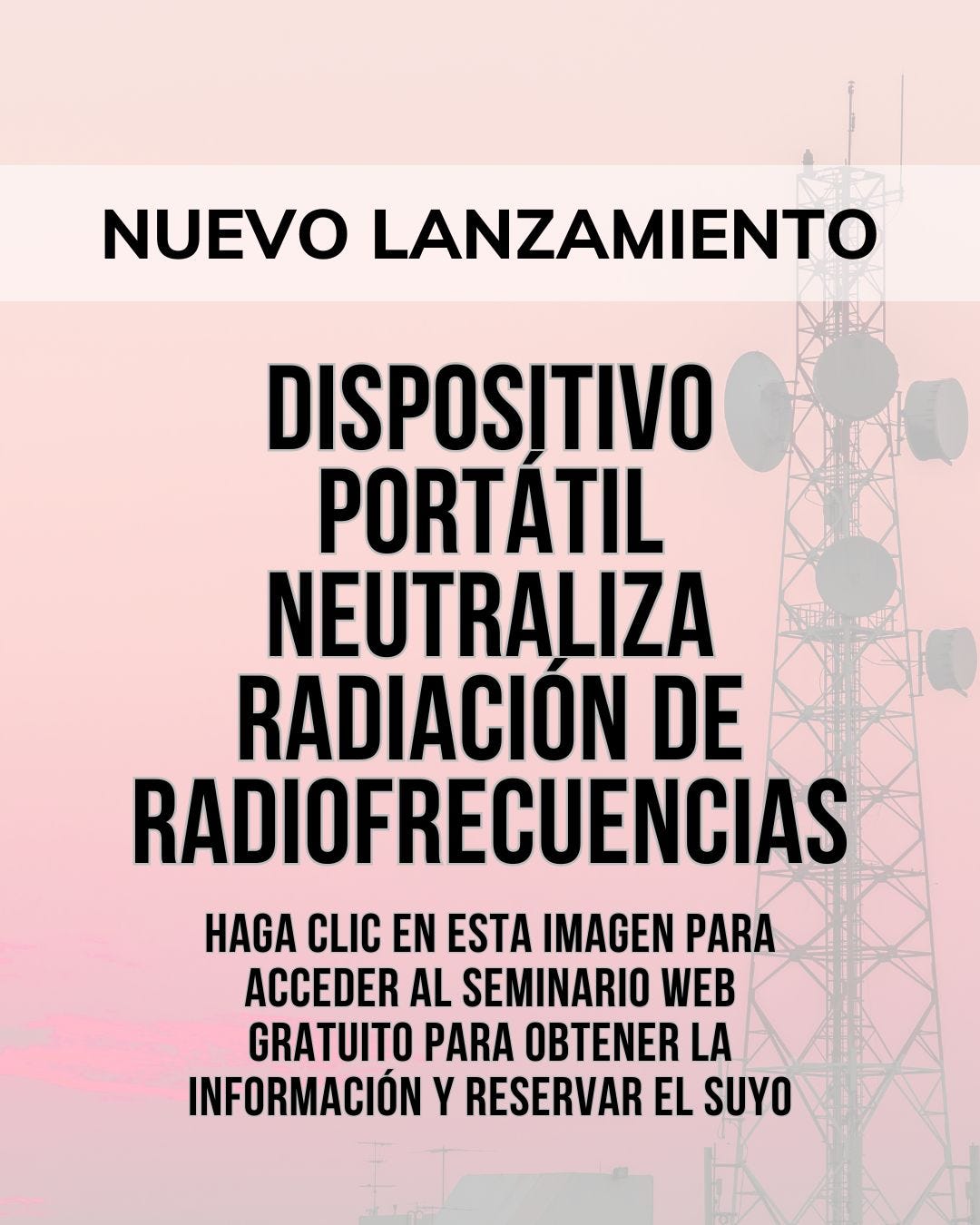
🚨 ¿Quieres saber cuándo estará listo “La Gran Ilusión - Libro 2”? 📗
Para estar en la lista de espera y recibir una notificación cuando este trabajo monumental e innovador sobre la vida futura y la naturaleza de la realidad esté disponible, haga clic AQUÍ.
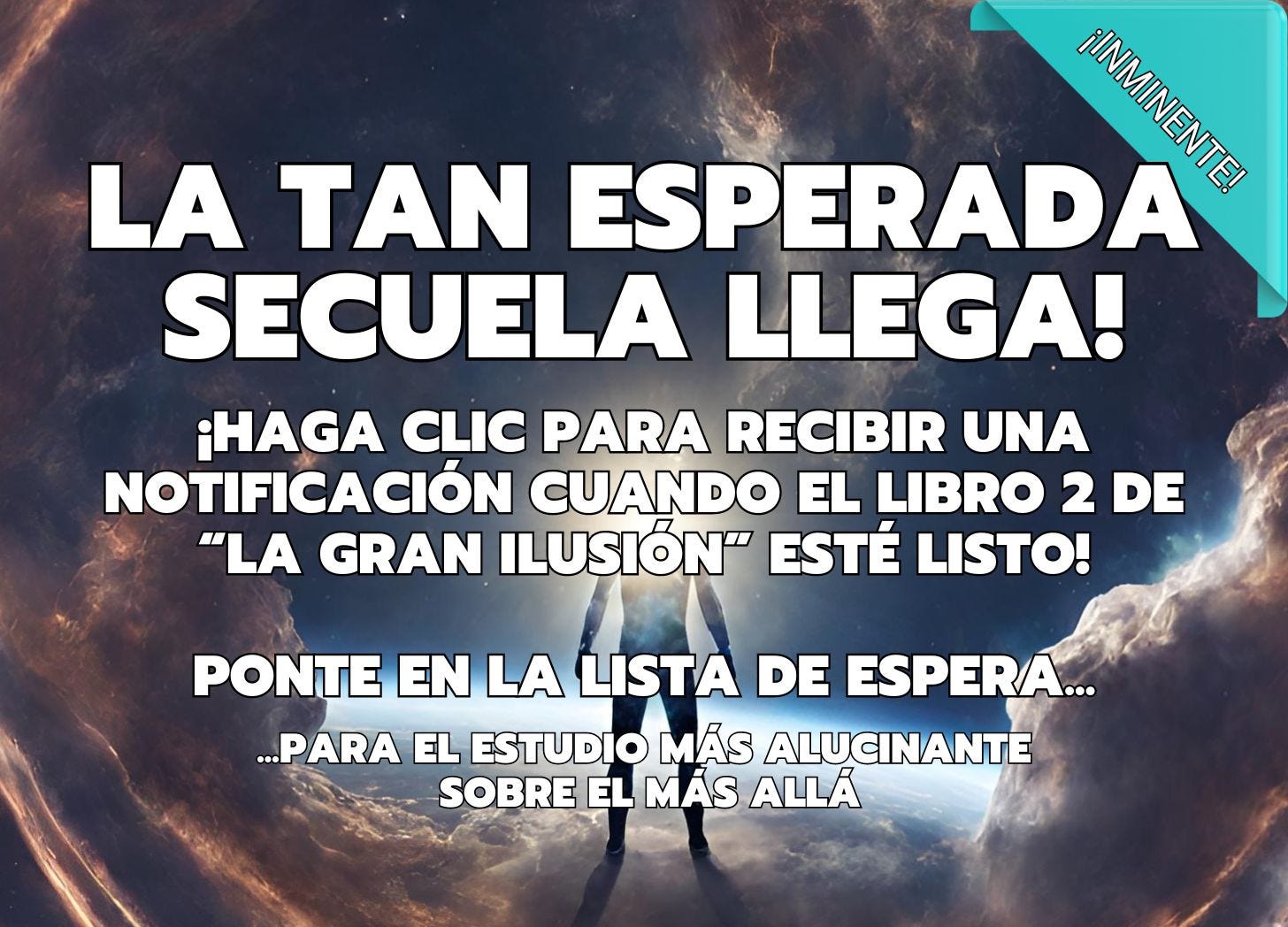
👀 NUEVOS HORARIOS DISPONIBLES PARA HTEY MASTERCLASS
Cambia tu vida de adentro hacia afuera, RÁPIDO y con comodidad. Mira la próxima clase magistral EN VIVO y GRATIS "Cómo evolucionar (sin trabajo duro ni meditación)": gran descuento en el interior ⤵️
-
Mejora tu biocampo y circuito energético
-
Vencer el autosabotaje
-
sanar trauma
-
Ampliar la autoconciencia
-
Ahorra tiempo y dinero
-
Atraer y manifestar con menos esfuerzo
-
Camina tu verdadero camino ⤵️
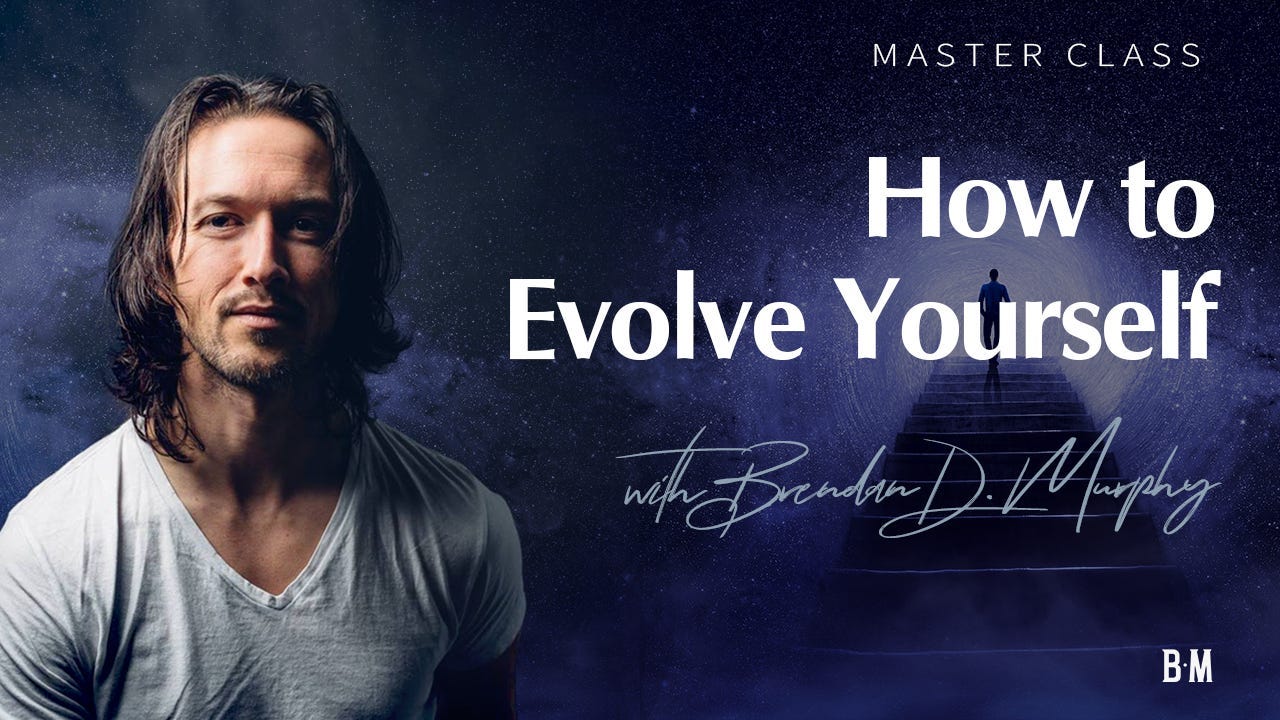
Comentarios recientes: "¡No tienes idea de cuánto me has ayudado realmente en formas que no podrías saber!" - TP
Obtenga una copia del Libro 1 haciendo clic en la imagen a continuación (mi sitio tiene los precios más bajos) ⤵️
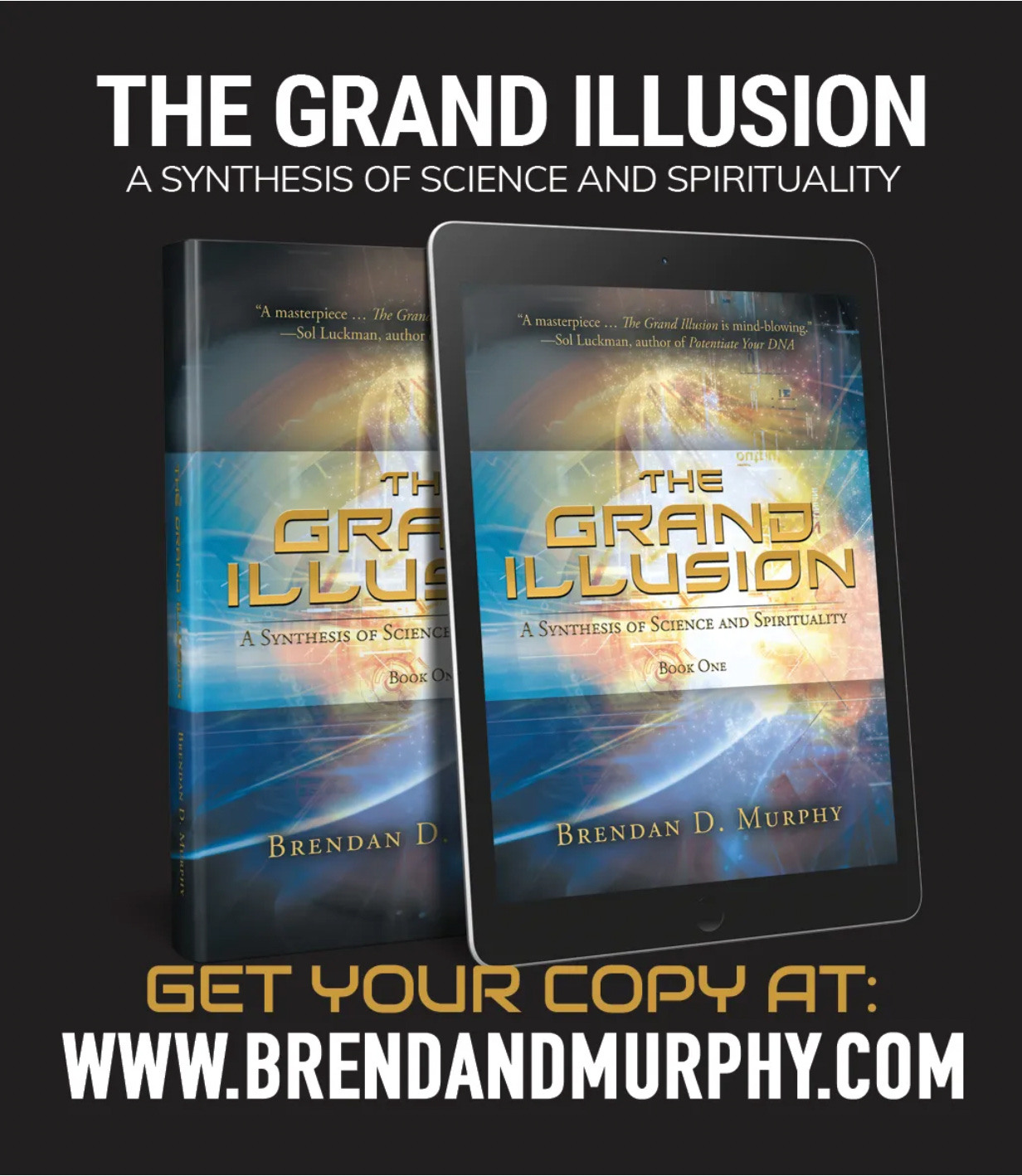
Algunos comentarios de los lectores:
-
“Brendan es el Chomsky del movimiento espiritual.”– Alobar Jones, intuitivo médico
-
“Toda persona en el campo de la psicología 'paranormal' o temas relacionados debería tener este libro como referencia principal.”– Dr. Buryl Payne
-
“Una obra maestra… La Gran Ilusión es alucinante”. – Sol Luckman, autor de Potentiate Your DNA.
-
“Has escrito la mejor síntesis de ciencia moderna y ciencia esotérica que he visto en 40 años… ¡Brillante!” – Michael K. Wade
🚨 Para obtener audio y acceso completo a TODO mi contenido multimedia premium (con preguntas y respuestas del podcast), conviértete en miembro de The Truthiversity ⤵️

NOTAS FINALES
1 Crookall, Experiencias fuera del cuerpo, 14-15.
2 Ibíd., 15-16.
3 Sherwood, El país más allá, 58-9.
4 https://www.iwm.org.uk/
5 Alfred, Entre la Luna y la Tierra, capítulo 14.
6 Ibídem.
7 Sherwood, 61 años.
8 Zarión, Astroteología y Mitología Sideral,
9 Vayro, Lágrimas en el cielo, 203.
10 Crookall, 26-27.

